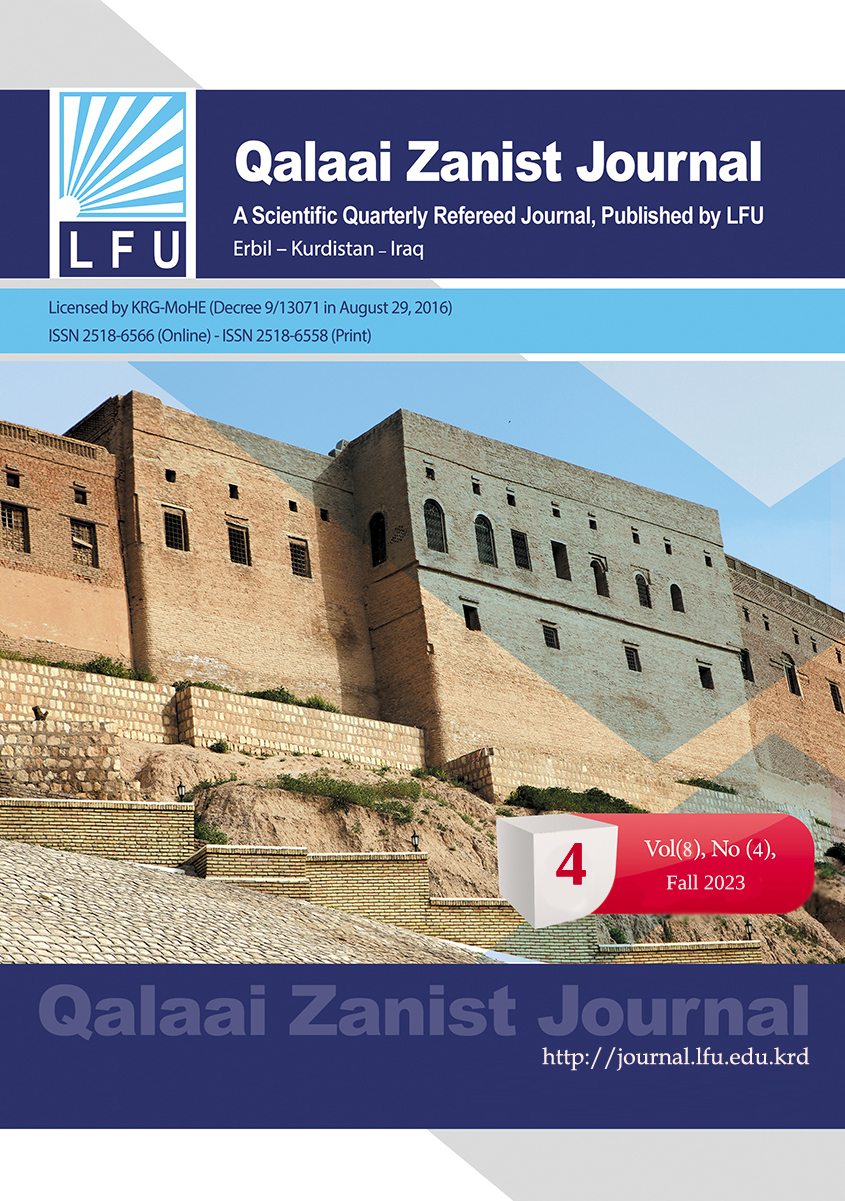Self-Compassion and Its Relationship to Body Image Among Refugee Students in Schools in Koya City in Period Covid-19
##plugins.themes.bootstrap3.article.main##
Abstract
This study aims to determine the level of self-compassion and the difference in its level according to the gender variable, to construct a body image scale among refugee students in schools at Koya city, to find out the level of body image in general and its dimensions and to find out the differences according to the gender variable. Also finally, finding the relationship between self-compassion and body image and to know the prediction of body image variable through self-compassion. The researcher used the descriptive correlational method The population consisted of (452) students, The sample of the study was (317) students were purposively selected. The tools used for data collection were the self-compassion scale which was developed by (Rase, et al., 2011), and the body image scale which was constructed by the researcher. (Independent sample T-test, Standard Deviation, mean, spearman correlation, principal compohent Analysis (PCA), Regression) were used for data analysis. The results showed that:
Self-image among refugee students in schools in Koya is at a good level, they are satisfied. There are no significant differences between self-image and gender variables. There are significant differences between self-compassion and gender variables in which males are more self-compassionate than females. There is a positive relationship between self-image and self-compassion. Self-compassion predicts self-image.
Downloads
##plugins.themes.bootstrap3.article.details##
How to Cite
Copyright (c) 2023 Zhwan Naser Faidhalla، Khelid Ismail Mustafa

This work is licensed under a Creative Commons Attribution 4.0 International License.

